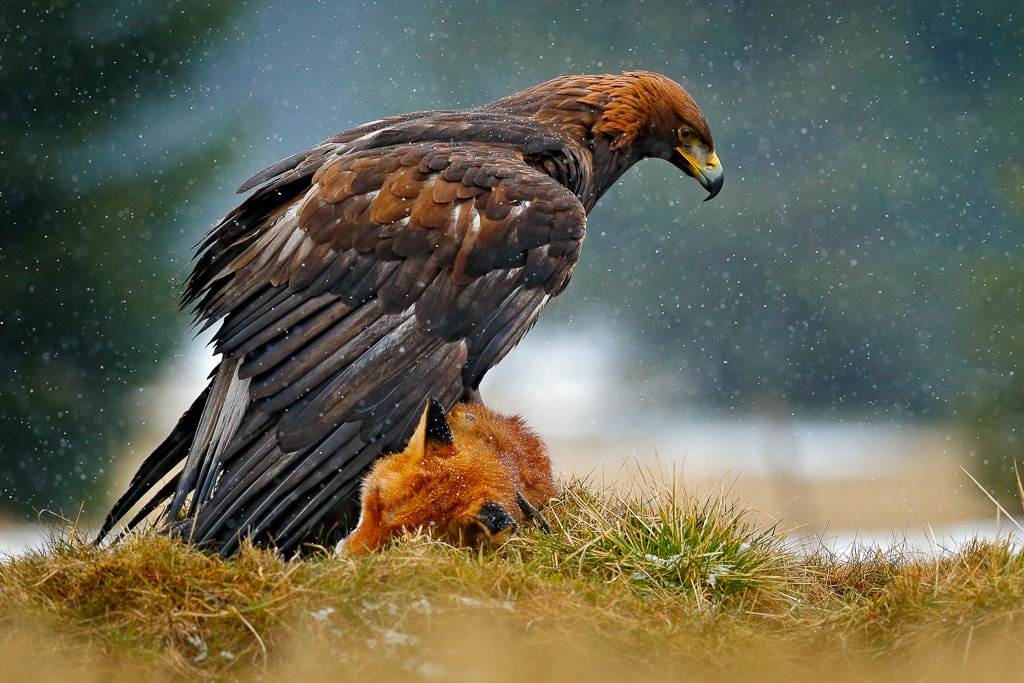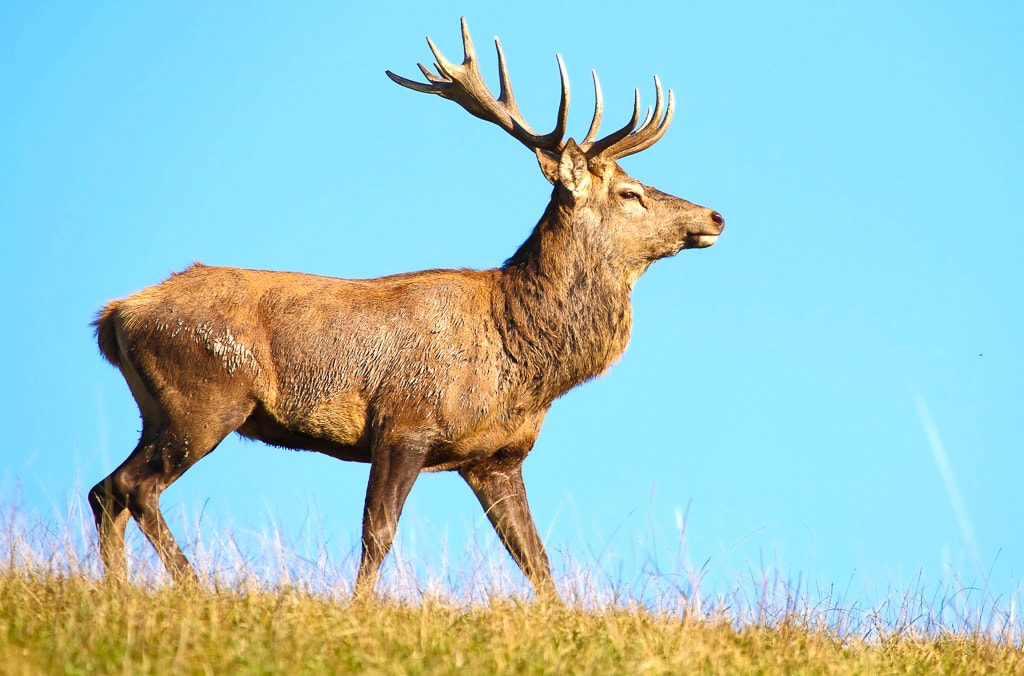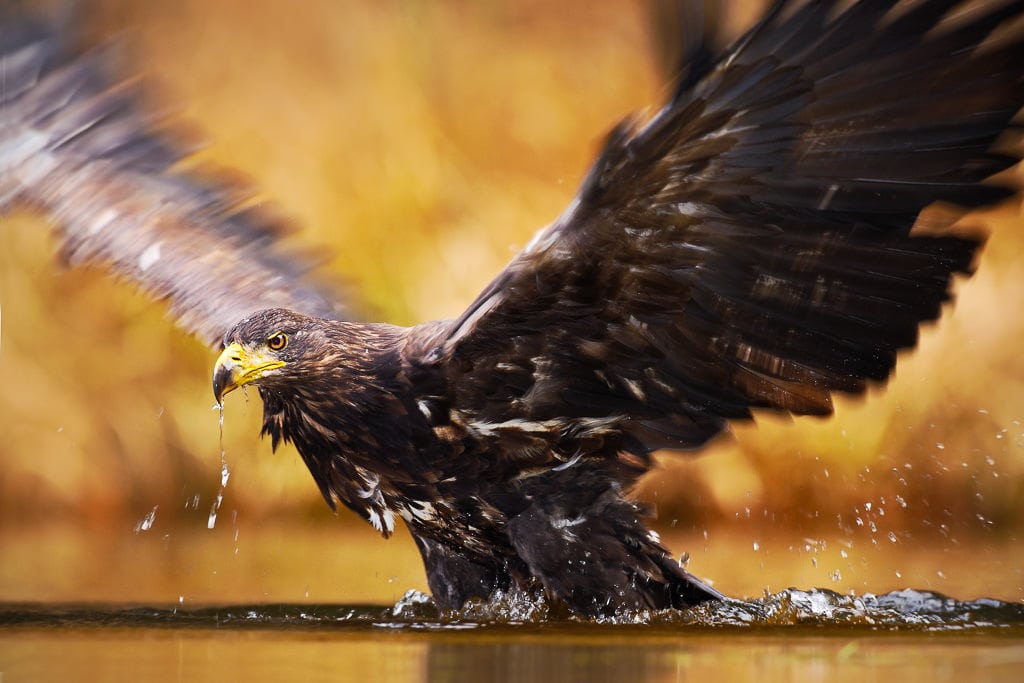Do you want to create amazing wildlife
photography, but you’re not sure how?
Then read on.
Because this article will give you 6 wildlife photography tips for consistently amazing photos. You’ll discover how to find the best light, how to create excellent compositions, and how to get frame-filling wildlife photos.

Wildlife Photography Tips
Let’s dive right in
Tip 1: Use the Low, Slow Approach
to Get Close to Wildlife
One of the biggest challenges faced by
beginner wildlife photographers:
Getting close.
You see, no matter how long your lens, you’ll still need to do some real work in the field – so that you can capture frame-filling wildlife photos.
See also: Lens Needed for Wildlife Photography
There are a few ways you can get close enough
to wildlife to capture beautiful images.
But my favorite is the low, slow approach,
which is frequently successful and is great for situations where you haven’t
set up a blind in advance.
Here’s how it works:
- Start by finding a subject that you can see in the distance, and position yourself so that the light is at your back.
- Then move forward slowly, with lots of stops and starts, and without any sudden moves. Keep your head down and don’t make eye contact with the wildlife.
- Move to the right for a few moments, then wander left, then stand still for a bit. But make sure you continue to move in the same overall direction so that you’re making progress getting close to your subject.
- Once you get decently close, you should drop down to your knees, or even to your elbows (if you’re willing). Continue to move toward the wildlife while keeping your head down. But take it even slower, dragging yourself a few feet before stopping. Monitor your subject out of the corner of your eye.
- At this point I recommend you snap a few photos so that the wildlife can get used to the sound of a camera shutter.
Continue on for a bit…
…until you’re close enough to start taking
photos. Then stop, and start snapping images.
If all goes well, the entire process may take
15-45 minutes; be patient and don’t rush things.

Also, a note:
The welfare of your subject is important. If
you’re photographing an animal that is clearly stressed, then stop. It’s not
worth capturing the shot if you can’t be proud of the story behind it.
Tip 2: Point Your Shadow at the
Wildlife for the Best Lighting
One of the things beginner wildlife photographers struggle with all the time is the light.
It’s so easy to go out during harsh, unpleasant sunlight – and come away with a memory card full of poor photos.
Because midday sunny light doesn’t really work for wildlife photography. Instead, you should shoot on cloudy days, or during the golden hours.
But it’s not enough to just show up at sunrise and sunset, point your camera at the subject, and start shooting. You have to do more than that.
The key thing to remember is to pay attention
to the light’s direction.

The best light for wildlife photography comes from behind the photographer and falls directly onto the subject. This is sometimes taught as a ‘point your shadow at the wildlife,’ because you can find the best light by doing just that; pointing your shadow at your subject ensures that you get some beautiful frontlight.
Now, you can also capture some unique photos
by utilizing sidelight (where the light falls onto the side of the wildlife),
or even backlight (where the light comes from behind the wildlife). But these
are non-standard lighting scenarios, and take some patience to deal with.
That’s why I recommend beginners start with frontlight, and only then graduate
to more difficult light choices.
Tip 3: Position the Wildlife
Moving Into the Frame
When it comes to actually composing a wildlife
photo, you may struggle to carefully place an animal in the frame.
It’s especially tempting to stick your subject in the dead center of the photo, but resist this temptation because that is one of the worst possible things you can do.
Instead, try point your wildlife into the frame, so it seems like the animal is running into the empty space (regardless of whether they really are).
See also: Tutorials for Wildlife Photography for Beginners
This will give your photo a sense of dynamism like the animal is moving. Plus, the viewer will follow the gaze of the animal straight into the rest of the photo (in other words, they’ll become engaged!).

Note that it’s not enough to just position the wildlife so it’s moving into the frame. You’ll also want to make sure you don’t cut off the back of the animal because that will make the photo feel disjointed. Instead, add a bit off room at the back, as well as the top and bottom.
Related: Composition in Photography – Practical Guide
Oh, and make sure that you don’t cut off the
wildlife’s feet! Because that basically never works.
You want to end up with an animal moving into
the frame, with adequate room on the top, bottom, and sides.
A perfect wildlife composition!
Tip 4: Shoot from a Low Angle for
Intimate Wildlife Photos
Here’s a more advanced wildlife photography
tip for you:
Get down low to photograph wildlife. Really low.
Basically, you should be on the same level as the wildlife–at the very least.
See also: Bird Photography Equipment
So if you’re photographing a small bird on the
ground, you should be pressed flat against the dirt. If you’re photographing a
moose, you can be standing up fairly straight, though depending on your height
you may need to kneel down a bit.
Why is this so important?
Because photos taken from standing height are…boring. They feel like you just walked by and took a snapshot.

Whereas photos taken from down low, with you
shooting on a level with the wildlife feel so much more exciting and
interesting and intimate.
It’ll take some effort. It’ll take some
willingness to get dirty.
But if you can get on a level with your
subject, your photos will look so much better.
Tip 5: Choose the Cleanest
Background that Enhances the Subject
Picking the right background is a key wildlife photography challenge and one that most beginners just don’t recognize.
Because the right background will make your subject stand out. It’ll make your subject pop off the page.
Related: Foreground, Middleground and Background in Photography
Now, the best backgrounds are very clean. They
contain no distractions. Nothing that could draw the eye away from the
wildlife.
One of the ways to ensure you get a clean
background is by using a wide open aperture, but this comes with a drawback:
You won’t get the whole animal sharp.

And in general, you want to keep the wildlife sharp. So instead of using a wide open aperture, I’d recommend carefully positioning yourself so that the distance between the subject and the background is as large as possible. The larger this distance, the blurrier the background will become. And the cleaner the background will look.
See also: Best Nikon lenses for bird photography
By the way, a cool trick to increase the
subject-background distance is to get down low. This will cause the background
to fall away, and you’ll get a nice blur (plus, you’ll get the intimate
perspective I talked about above!).
One more thing I should note:
Some backgrounds are just too messy to work
with, even if you’re using a wide aperture, and even if the subject-background
distance is sufficient. So you don’t be afraid to just give up on a background,
especially because you can often walk to the right or left and get a background
that’s completely different.
Tip 6: Use Continuous Shooting
Modes and ‘Spray and Pray’
Wildlife photography is often very fast-paced.
In fact, you may spend hours waiting for a shot that appears and disappears in a single instant.
See also: Best Affordable Camera for Wildlife Photography
Which means that you have to be ready for
anything–any motion of the wildlife, any interesting behavior, etc.
That’s why I recommend you put your camera in its continuous shooting mode so that you can capture the highest number of frames per second possible.

And be ready with your finger on the shutter button. If you have to take dozens of shots to get the single one that works, that’s fine. You can delete all the bad photos later–once you’ve grabbed the million dollar shot.
See also: Wildlife Photography Settings
So don’t be afraid to shoot as soon as the
willdife starts doing something interesting, and don’t be afraid to carry on
holding down your finger until the wildlife stops.
That’s how you’ll maximize your number of
keepers.
Top 6 Photography Tips for Stunning Photos: Conclusion
Now that you’ve finished this article, you
have all the wildlife tips you need to create amazing wildlife images.
So just remember what I’ve told you:
- Carefully get close.
- Use frontlight as much as possible.
- Point the subject into the frame.
- Get down low.
- Pick the cleanest background possible.
- Photograph in bursts.
- And have fun shooting!

